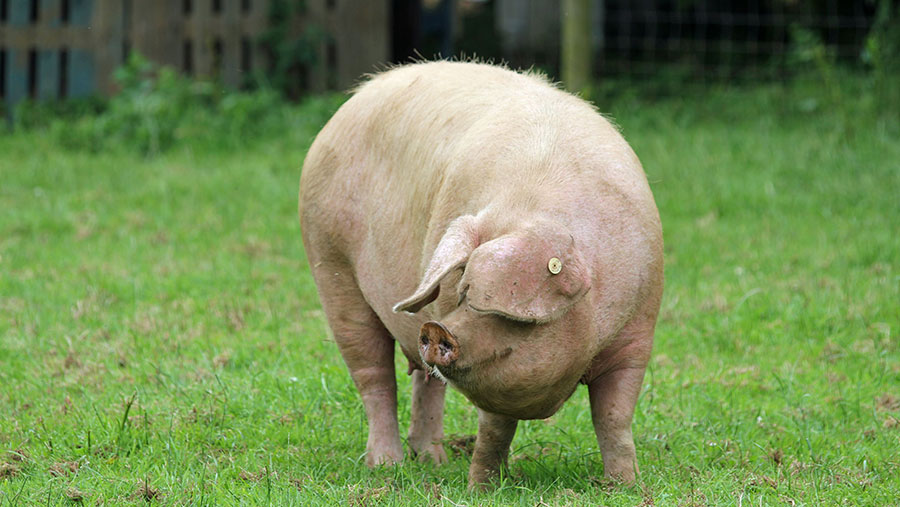Gene study could save rare pig breed
 © Linda Trotman
© Linda Trotman Results from a major genomic study on the Lop pig could pave the way for the breed’s survival, according to the Rare Breeds Survival Trust (RBST).
The study identified unique genetic markers for the Lop breed for the first time. But it also identified that, while there was genetic diversity within the breed, a high level of genomic inbreeding had occurred.
Because of this, the Lop’s effective breeding population size had dropped to a concerning level of just 40-45 animals.
The findings reinforce the need for robust measures both to tackle inbreeding and to prevent any further decrease in breeding population.
See also: Defra relaxes rules on gene editing
Rare Breeds Survival Trust (RBST) chief executive Christopher Price said the Lop pig was in a perilous position and categorised it as a priority breed on the RBST Watchlist.
“This first-ever identification of the genetic markers of the Lop breed provides the basis for best animal selection for breeding programmes and for storing genetic material,” he said.
“It also enables us to form tailored programmes to increase genetic diversity within the breed.”
He praised the study as an important precedent that could set a template for other potentially breed-saving projects.
The study
The genome study was commissioned by the RBST in conjunction with the British Lop Pig Society.
Hair samples were collected from 190 individual pigs raised on 40 farms, constituting a valid cross-section of the current breeding population.
The hair samples were used by experts at Scotland’s Rural College (SRUC) to derive genome-wide genotypes for each pig.
The genomic study is part of a five-year project which began in 2019 as partnership between the RBST and the British Lop Pig Society, with major funding from the Gerald Fallowes Discretionary Trust.
Georgios Banos at SRUC said: “This work demonstrates the genetic uniqueness of the British Lop pig.
“We used modern technologies and data to derive information that may be used as a practical breed purity test, and also inform breeding strategies aiming to safeguard the integrity of the breed.”
Lop pigs
Originating in the West Country, the Lop is a white pig with distinctive ears that touch the end of its nose. Although it is one of the UK’s rarest native pig breeds, it produces high-quality pork and bacon, making its genetics a potentially valuable commodity.
